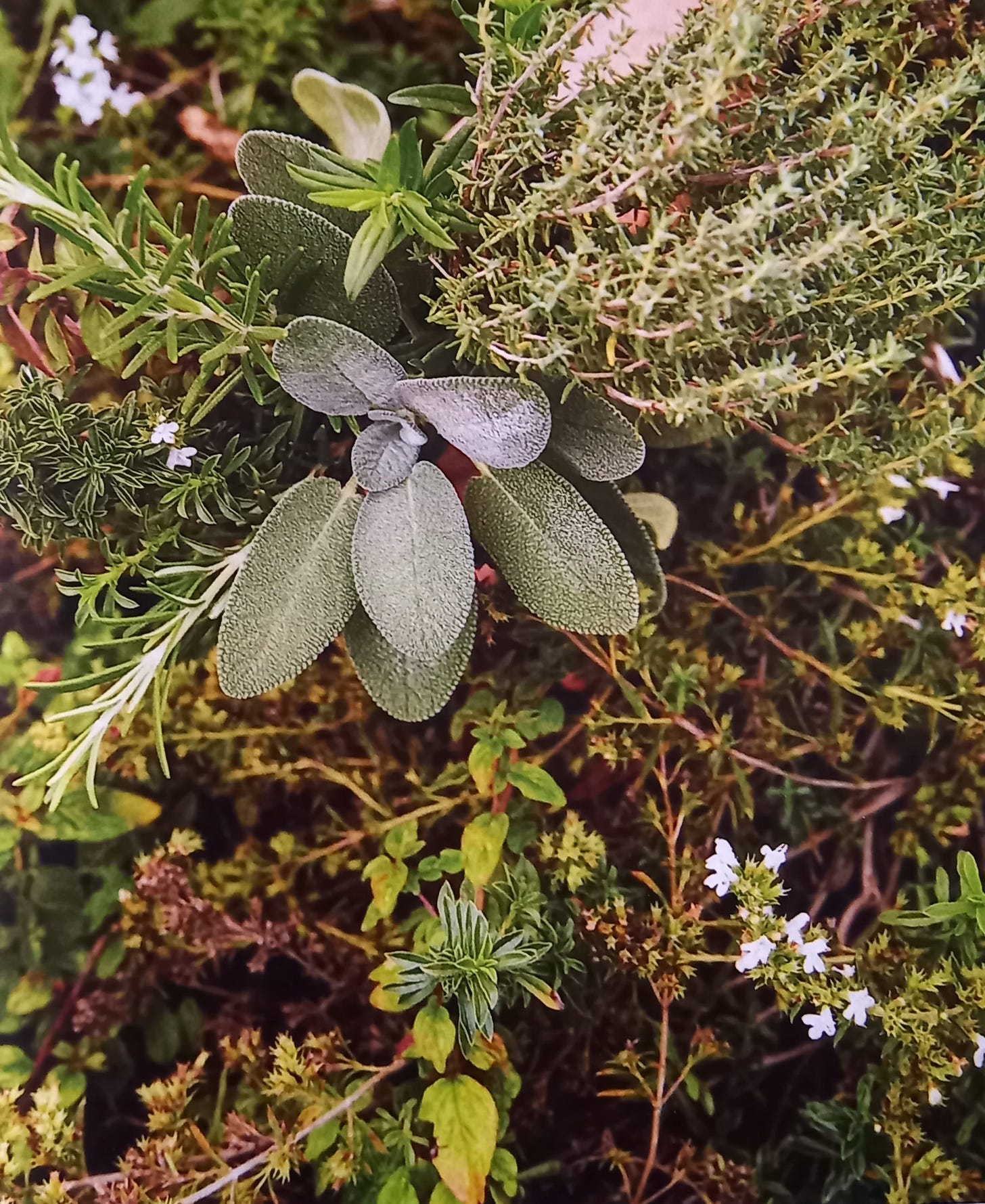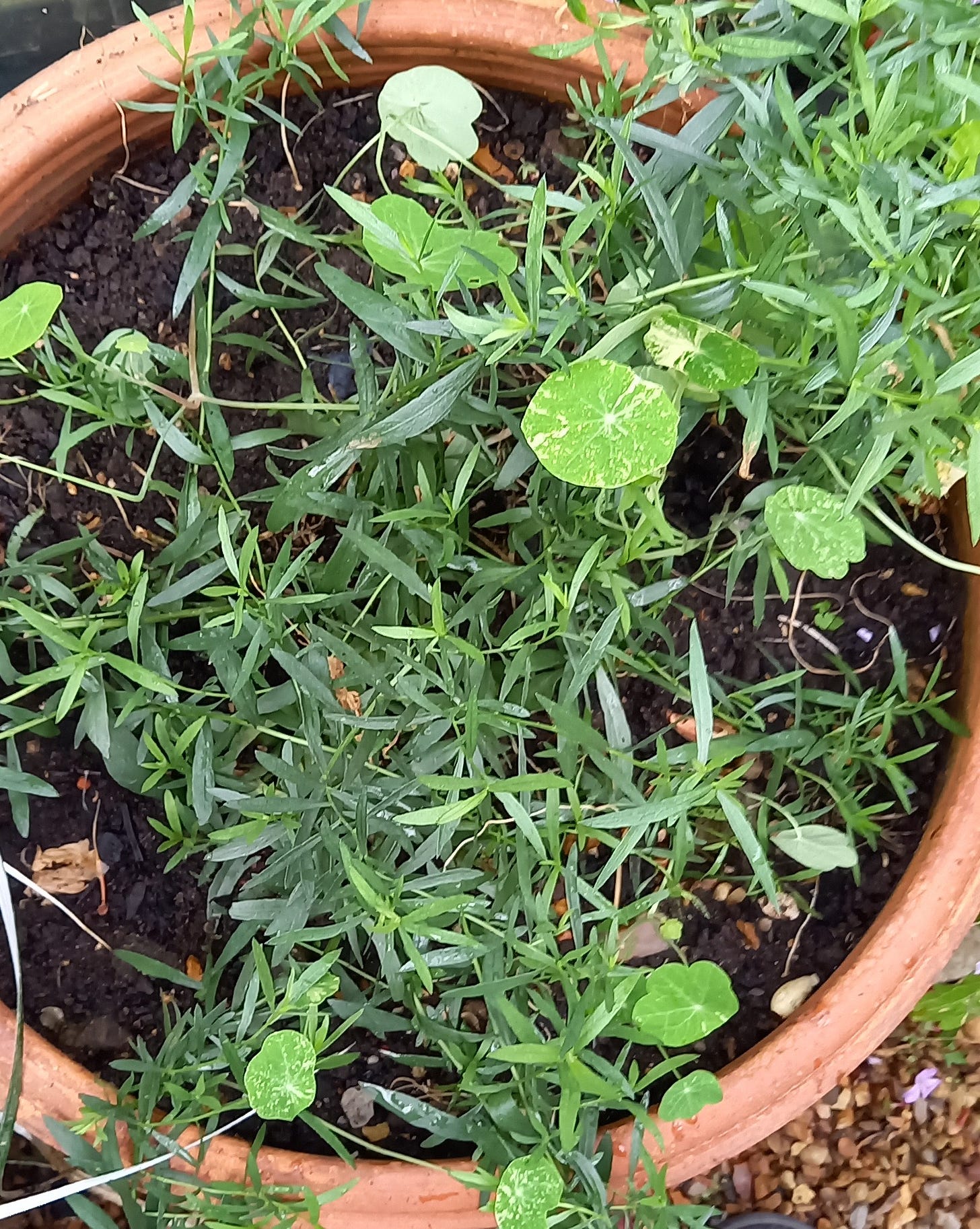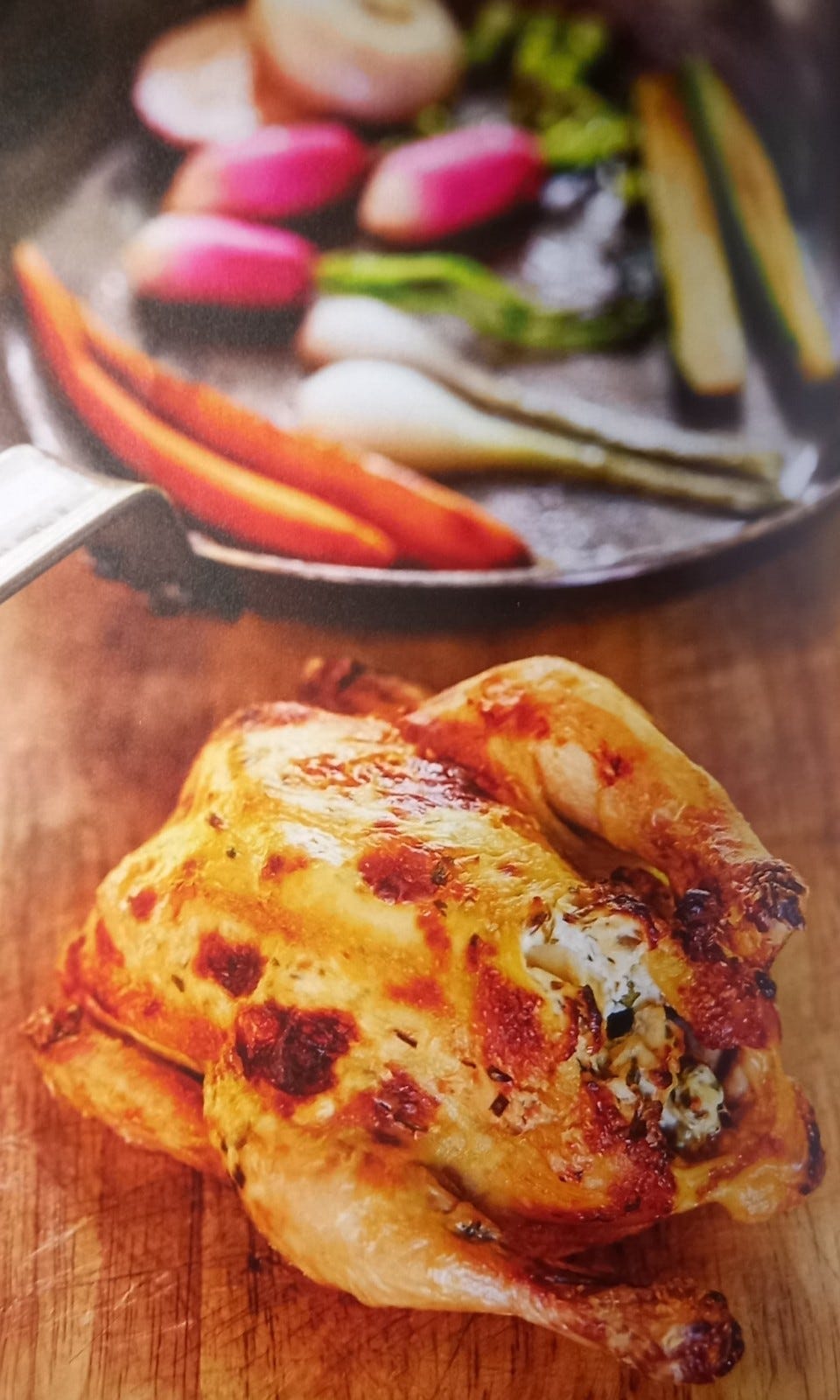Fines 'erbes keep summer going
A recipe for Herb-stuffed poussin
Shiny new friend Frances (friends are the best of anything you can get new), who is astonishingly well connected, travelled, respected, accomplished and introduced by a lustrous old friend, Rosie, equally well connected, travelled, respected and accomplished, sent me these two short videos of Jeremy Lee.
He is head chef of Quo Vadis, one of Soho’s most renowned restaurants, once a brothel and home to Karl Marx, though probably not at the same time. In it, he's built a temple to un-mucked-about-with modern British cooking produced from the most spruce of regional ingredients. All about herbs, the brief clips introduce us to his grower of them, Frances Smith. Not a relation of my Frances, although she also seems a treasure. (If you only watch one clip, make it the second.)
He makes the point that until quite recently, herbs all came from abroad, dust-dry in pots, and nowadays come fresh instead, packaged in cellophane and very expensive. Quo Vadis’ supply is grown at Frances Smith’s farm in Appledore, Kent, the county called the ‘garden of England’.
With every dish he produces, Lee is a chef who goes after the cleanest of flavours. One of the means for an amateur cook to achieve this is in the use of fresh herbs. If you have space on your window sill, or somewhere in strong light, set up your own herb garden in pots. Not only will a glance at them lift your heart, but winter approaches and the addition of judiciously chosen herbs will bring summer back to your food.
Mint, along with parsley, used to be the only herb Brits were aware of. It was finely chopped and crushed with sugar, hot water and vinegar to go with roast lamb. (Unless you’re French, this isn’t an unholy sauce, honest. But you probably have to be from the UK, and not a millennial.) These days, mint is found in cocktails, in salads, in dips, in everything Middle Eastern that comes served with and without pomegranate seeds, and folded into summer berries. Even if you have space outside, only plant mint in a pot. You can bury that in the earth if you like. If you don’t contain mint’s roots, it will take over your garden.
Mint rules over the herb kingdom. Biblical in the extent of its family, members include sage, thyme, oregano and sweet marjoram (the latter not the former is frequently what flavours your pizza or pasta sauce), basil, summer savory and the more peppery winter version, anise hyssop, lemon balm, germander and the shrubs rosemary and lavender.
Sage, rosemary, lavender and thyme, being woody-stemmed, are not botanically known as herbs as they don’t die back annually. Being perennials, once they have become established, you need never buy them again.
Tarragon, with its almost tongue-tingling licorice taste, is possibly my favourite herb - wonderful with chicken. Be careful when you buy a plant to make sure it is French tarragon (Artemisia dracunculus var. sativa), not Russian tarragon (Artemisia dracunculoides) which has no flavour and is too often the tarragon on sale in US supermarkets
Frost-sensitive basil is generally grown as an annual, so you’re best off investing in a new plant at the beginning of each summer. Pinch out any flowers to keep it bushy. In Ancient Greece and Rome, gardeners believed basil would only flourish if the sowing of the seeds was accompanied by loud cursing and shouting. According to an old English folk tale, parsley, a biennial and sometimes challenging herb, is most successfully grown in a household where the woman wears the pants. Chives are pretty easy to grow from seed, but a supermarket plant will probably last you a summer - and more if you plant it out into a soil-filled pot. If you want to introduce greenery to your nest, why not buy a small bay tree instead of a plant whose role is only to decorate?
Historically, herbs were widely employed medicinally before they were used in the kitchen. Cuneiform inscriptions show thyme was grown for medical use in Sumaria three millennia before Christ. In 162BC, Greek physician, surgeon and philosopher Galen was known for concocting complicated herbal remedies that might contain up to 100 ingredients. Use of herbs in Chinese medicine dates back to 1BC. India’s ancient Ayurveda medicinal system is based on herbs. In the 8th century, Emperor Charlemagne compiled a list of 74 different herbs, both culinary and medicinal, to be planted in his gardens. In 1652, Nicholas Culpepper, an English botanist, herbalist, physician and astrologer, compiled The English Physician, a key source of pharmaceutical and herbal lore of the day.
London’s Chelsea Physic Garden was established in 1673 by the Worshipful Society of Apothecaries, to grow and learn from medicinal plants. For centuries, monks in many cultures cultivated herbs alongside vegetables. In Siberia, in South America and among Native American tribes, shamans used herbs for spiritual and physical cleansing. Indigenous Australians developed bush medicine from local herbs.
In Moscow, we strew bay leaves around skirting boards and inside cupboards to deter the permanent infestation of cockroaches. Though it didn’t seem to have much effect on them, they are commonly scattered in French farmhouses to keep mice away.
Back in the kitchen, cut herbs are best kept fresh by rolling them up in a paper towel then running the bunch under the tap to soak the water. Squeeze the excess out gently and store the herbs in the fridge. If you stick them in a glass of water, the stems quickly turn to sludge. Alternatively, chop dampened herbs finely and press them into an ice cube tray. You can set them in place with a tablespoon of stock or water. Once frozen, store them in marked bags in the freezer to add a cube to a soup or stew.
At any time of year, these herb-stuffed poussins taste of high summer. You can do this to a regular sized chicken if you prefer.
Serves 4
120g/4¼ oz Philadelphia or other full-fat cream cheese
1 small bunch chives, finely snipped
handful parsley, leaves only, very finely chopped (save stalks)
1 sprig tarragon, leaves only, very finely chopped
2 garlic cloves, peeled and very finely chopped
Zest half a lemon
Salt and pepper to taste
4 poussins or 2 if large
2 tablespoons oil
1 onion, peeled and diced
1 carrot, peeled and diced
1 celery stalk, diced
1 bay leaf
Stalks from parsley
1 tablespoon plus 1 teaspoon sherry vinegar
200ml/7fl oz white wine
400ml/14fl oz chicken stock
30g/1 oz butter, chilled and cut in cubes
Preheat oven 220C.
Mash herbs and garlic into cream cheese and season. Run a finger carefully under the skin of the breast and thighs but stop before the fat end to create pocket. Gently push in stuffing.
Heat oil in a saute pan over medium heat. Add vegetables, bay leaf and parsley stalks. Fry until gold, stirring. Add vinegar and wine. Boil until liquid has almost evaporated. Add half the chicken stock to barely cover the vegetables and reduce on high heat until nearly dry. Add remainder of stock, turn heat down and simmer until reduced by half. Strain through a sieve, discarding the vegetables, allow to cool and refrigerate till needed. Can be made a day ahead.
Place poussins on a wire rack in a roasting dish. Roasting time depends on size. Check after 30 minutes. When skin is gold and stuffing drips browning under rack, remove and rest 5 minutes.
Bring sauce to a simmer, add one teaspoon of sherry vinegar. Cube by cube, swirl in butter until sauce thickens. Spoon a little over each poussin and serve.
Hint: How to know if a sauce is reduced. Before you begin to reduce a sauce, stick a chopstick upright in the centre of the pan to touch the bottom. Where the liquid reaches, wrap chopstick with a rubber band. To check if sauce is reduced by required amount, return chopstick and check sauce level against the rubber band. Génial, non?







